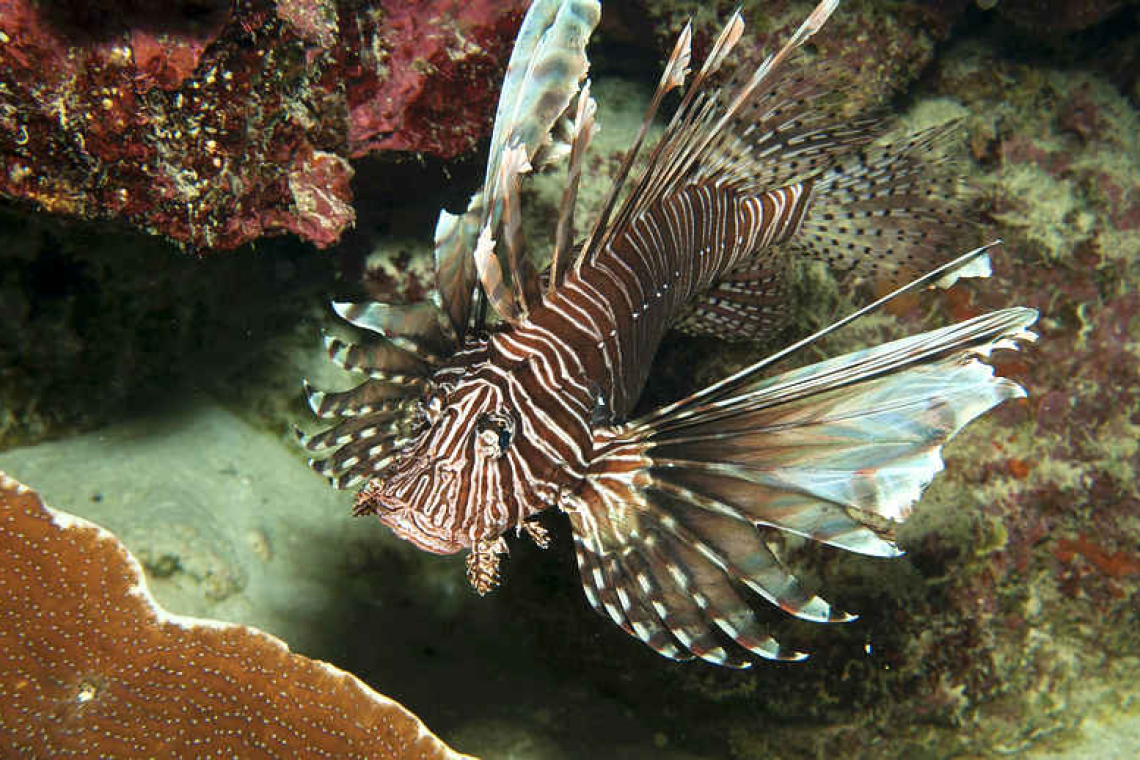Lionfish (Pterois volitans). (Rudy van Gelderen photo)
SABA--Research conducted by Saba Bank Management Unit and Wageningen University and Research in the Netherlands documented the third incidence of rapid lionfish population decline within the Western Atlantic since their introduction over thirty years ago. This local population crash could indicate that lionfish are reaching the final stage of their invasion for this area, including the Saba Bank.
Lionfish, a venomous fish native to the Indo-Pacific, were first introduced in the Western Atlantic more than 30 years ago. Since then, they have been steadily spreading throughout the Caribbean, now reaching as far south as Brazil.
Although populations seemed to be expanding rapidly, several locations have actually started to see a “levelling-off” of numbers, leaving many experts to believe the Caribbean may start to see more stable or even decreasing lionfish populations moving forward.
A recent survey recorded lionfish captured in lobster and redfish (snapper) fishery traps within the Saba Bank. Since 2010, Saba Bank has seen a rapid rise in lionfish numbers and then a subsequent population crash since 2020.
This represents the third case of boom-bust events for lionfish populations within the tropical Western Atlantic. The first event was documented in the Bahamas in 2012, and the second event, which was associated with a high incident of skin lesions, was observed in the Gulf of Mexico in 2020.
However, none of the lionfish caught within the Saba Bank showed any signs of skin lesions, leaving experts uncertain to the cause of the sudden population dip.
Overall, long-term monitoring data show that the lionfish caught in traps peaked between 2012 and 2015 and then steadily declined before reaching its lowest values in 2020.
Although the lionfish invasion is one of the most widely studied marine fish invasions, there is still very little known about the factors controlling these populations.
Perhaps the rapid decrease in populations within the Gulf of Mexico resulted in lower overall larval recruitment for the Caribbean. If this is the case, researchers expect to see lower lionfish populations in other areas of the Caribbean as well.
There are 27 exotic marine species recorded throughout the Dutch Caribbean. Research, such as this, is to give local governments and park management organisations a better understanding of the fragility of local reefs.
It would appear that lionfish have now reached the final stage of their invasion, firmly established on the reef with population numbers beginning to stabilise. Researchers hope that local predators will soon develop resistance to the lionfish venom, allowing these fish to become integrated into the local food web.
The full report is available on the Dutch Caribbean Biodiversity Database.







